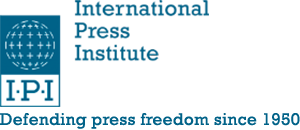The COVID-19 pandemic sweeping the world has posed a serious challenge to editors, media executives and journalists. While on the one hand press freedom violations have become rampant as many governments have tried to control the public narrative about the health crisis, on the other hand reporting about it amidst changing scientific discourse has become an arduous task.
Earlier this week, a video praising the healing benefits of hydroxychloroquine for COVID-19 was promoted by U.S. President Donald Trump and went viral, reaching 17 million views before being deleted by Twitter and Facebook. Now, seven months into the pandemic, news outlets were quick to dismiss the claims made in the viral video.
But when the crisis began, well-respected publications around the globe were caught off guard, uncertain of how to report on this once in a lifetime challenge.
To understand how science journalists are working to cover the pandemic even as the science itself struggles to keep up, IPI organized a webinar moderated by IPI Vice Chair and former editor of the South African weekly newspaper Mail and Guardian Khadija Patel. The panel comprised science journalist Kai Kupferschmidt, chief editor of Nature India Subhra Priyadarshini, and physician and journalist Dr. Seema Yasmin.
Lack of resources
The Mail & Guardian was one of the first outlets to cover the potential impact of the coronavirus in the region back when it started. “But we didn’t know exactly what we were doing”, admitted Patel. “We still get criticism for misrepresenting a predictive model early on, but without dedicated resources towards covering science and public health, we were caught flat-footed.”
As in recent years local news outlets have reduced staff owing to financial reasons, many media were pushed into uncharted waters to report on the pandemic and the science advancing rapidly around it.
Furthermore, the economic downturn brought by lockdowns has led to layoffs in media organizations across the globe, with around 40,000 journalists losing their jobs in the U.S. alone. Ironically, this is happening at a time “when we need journalists the most”, Yasmin, a writer and director of the Stanford Health Communication Initiative, said. Yasmin now trains journalists to cover scientific issues when resources are scarce.
While the panelists agreed that “uncertainty” is still the most commonly used word in newsrooms, coverage of the health crisis made big strides over the past few months as journalists stepped up to the challenge.
Quality journalism’s moment in the sun
“We drew up editorial criteria to establish what to cover but more importantly – what not to cover”, explained Priyadarshini, editor in chief of Nature India. According to Priyadarshini, coverage must provide value by focusing on research and researchers, offer authoritative data on key issues related to the pandemic, and be reviewed by experts on the topic.
But evaluating the newsworthiness of stories became increasingly difficult amid the overload of information, with contradictions within the scientific community often leading to confusion.
Confusion that could perhaps be prevented through quality journalism.
In early June, a megatrial in the UK (called Recovery) concluded that hydroxychloroquine does not benefit hospitalized Covid-19 patients. In his coverage of the study in Science magazine, molecular biologist Kai Kupferschmidt explained that in contrast to smaller studies in which 300 to 400 patients are surveyed, Recovery offered the most conclusive evidence owing to its control sample of 12,000 patients and hundreds of participating hospitals. So, while a newer study might contradict Recovery by stating hydroxychloroquine proved to be beneficial for 2,000 Covid-19 patients triaged, it is the journalist’s job to look into and understand the quality of each trial and choose to report on conclusive evidence rather than newer contradictions. “But it’s all about caveats”, he stressed. “Context is extremely important in these cases, as the science can change”.
With great power comes great responsibility
A global survey conducted earlier this year points to a 50 percent rise in news consumption, as people scrambled for updates on the coronavirus. But as conspiracy theories continue to infect every corner of the internet, journalists are torn between the duty to report on false assumptions and the fear of amplifying them. First of all, “it’s important to understand where people’s beliefs are coming from”, Yasmin explained, “and when reporting on myths and conspiracies, be careful of how you frame it.”
Moreover, calls to end lockdowns are gaining momentum amid the increasing economic pressure, and while journalists acknowledge the difficult reality inflicted by necessary health regulations, simply echoing these notions carries risk.
“Do we wreck our economy or let people die is a false dichotomy”, Kupferschmidt said. “Good journalism’s job is to explain the tradeoff: Simply that if you have a pandemic the economy will fail anyway – that aspect should be explained by the media.”
IPI has been monitoring developments concerning press freedom during the Covid-19 pandemic and offers resources to support quality journalism and defend the free flow of news during the coronavirus pandemic.

